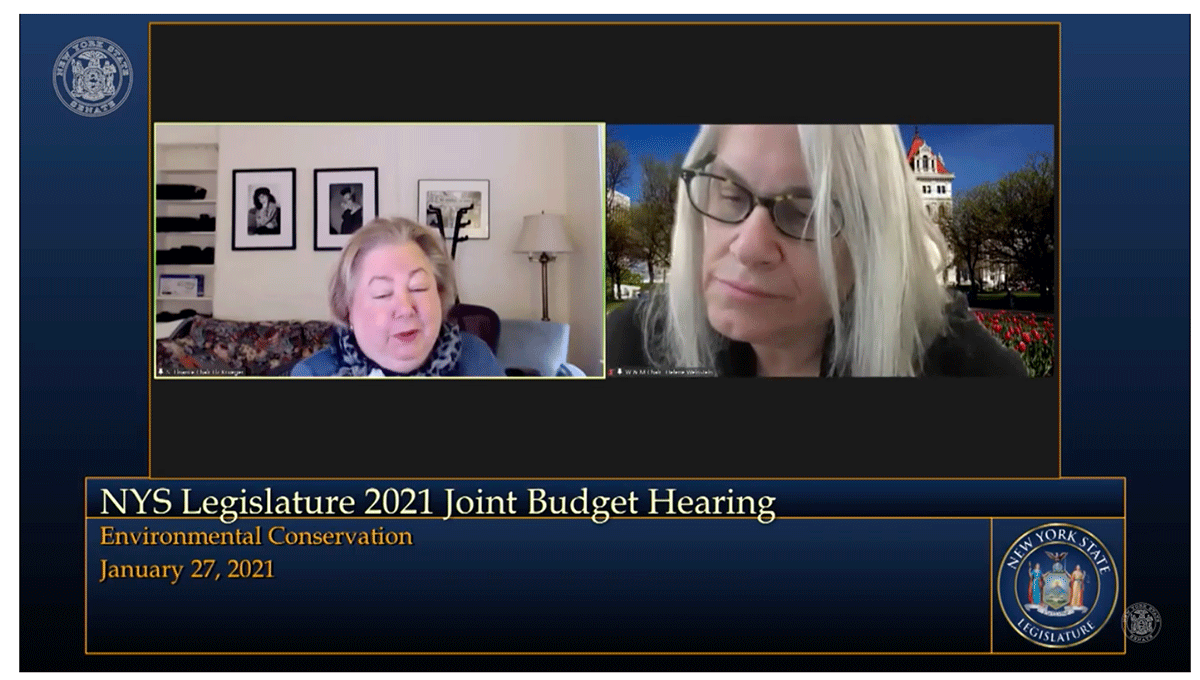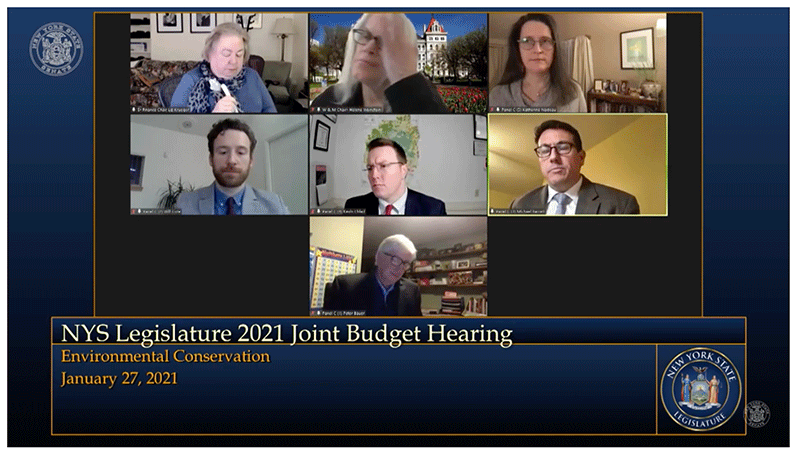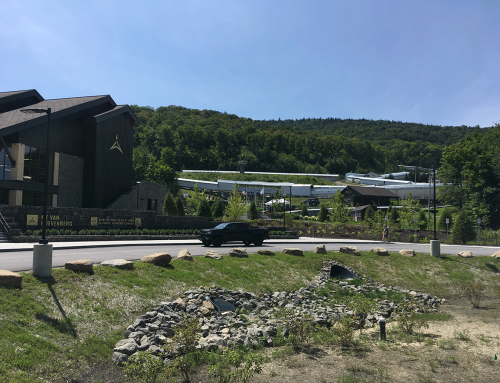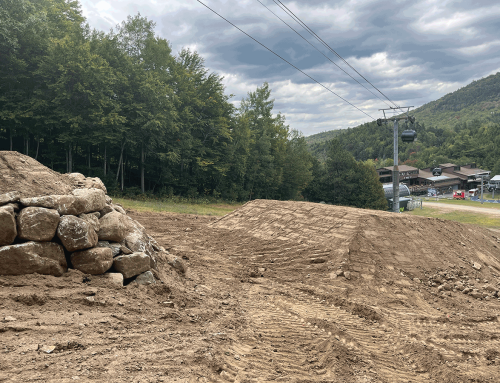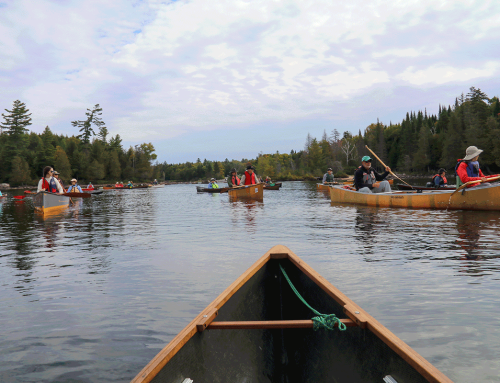NYS Assembly-Senate Environmental Conservation Budget Hearing on January 27, 2021 via Zoom
January 27, 2021
Hon. Liz Krueger, Chair
NYS Senate Finance Committee
172 State Street, Capitol Building
Room 416 Capitol
Albany, NY 12247
Hon. Helene Weinstein, Chair
NYS Assembly Ways and Means Committee
Room 923
Legislative Office Building
Albany, NY 12248
RE: Joint Legislative Budget Hearing on Environmental Conservation
Dear Senator Krueger and Assembly member Weinstein:
Protect the Adirondacks is pleased to provide these comments on environmental funding in Governor Cuomo’s draft 2021-2022 budget for the State of New York. Thank you very much for this opportunity.
The Indispensable Forest Preserve, the People’s Land in New York
In the time of COVID19, the public Forest Preserve was indispensable. New Yorkers from far and wide flocked to the public Forest for safe, socially-distant, outdoor activities throughout 2020. The dramatic increase in public use of the High Peaks Wilderness, and other places in the Adirondacks, mirrors trends across the country as wild and beautiful places were overwhelmed. The rise in public use of the Forest Preserve, most keenly seen in the High Peaks Wilderness and hiking trails around Lake George, is also clearly evident in any trip to Rondaxe Mountain in Old Forge in the western Adirondacks or Kane Mountain in Caroga in the southern Adirondacks, among many other popular trails. The boom in public use has revealed longstanding weaknesses in the management of the Forest Preserve.
It has been mystifying that year after year Governor Cuomo refuses to invest in the People’s Lands. He has invested in State Parks, but not in the 3-million-acre Forest Preserve. The People’s Land needs massive investment as our hiking trails and facilities for public parking and trailheads are poorly designed and constructed and have not been maintained. The Forest Preserve in the Adirondacks needs massive investments in public education both at the trailhead and online, in a real National Parks-quality High Peaks Wilderness Visitor’s Center in Keene Valley, in scientific research to assess natural resource impacts from public use so that science, not politics or personal whims, drives decision making, and in personnel so that we have more Forest Rangers in the field and professional Wilderness Managers overseeing our public lands. The People’s Land merits greater investment than we’re seeing in the Environmental Protection Fund (EPF) or state agency budgets.
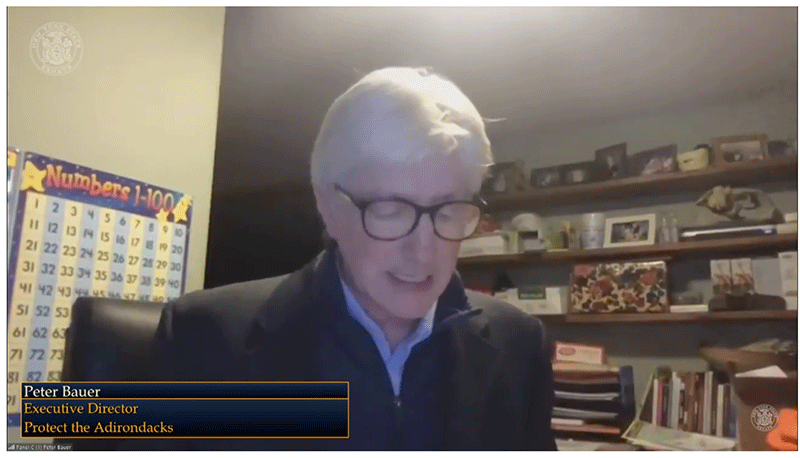
PROTECT executive director Peter Bauer testifies remotely via Zoom at the January 27, 2021 joint NYS Assembly-Senate Environmental Conservation Budget Hearing
Lake George Park Commission
The Governor’s budget proposes “realigning” of the Lake George Park Commission (LGPC), which is a small state commission with 9 FTE’s. The budget proposes to move this commission to the Department of Environmental Conservation (DEC). The LGPC was specifically designed in statute to be independent. It’s governed by a 10-member Board, which has nine citizen members, and a representative from the DEC. Board members serve 9-year terms. Its chair is selected by the Board and not the Governor. It has an independent financing structure, managed by the State Comptroller, with funds generated from fees collected annually for docks and boats on the lake. It administers a distinct section in the Environmental Conservation Law that sets out its mission and responsibilities.
The focus of the LGPC is Lake George and the Lake George Park, in statute starting in the 1920s, is the watershed of the lake. One hallmark of the LGPC is its independence. This independence produced the highly successful mandatory boat inspection and decontamination program for Lake George, developed and implemented at a time when New York State was poorly positioned to effectively combat the spread of invasive species. While aquatic invasive species have continued to spread throughout New York, even as the 2014 Transport Law has been in effect, no new invasive species have been found in Lake George.
We urge the Legislature to reject the move by the Governor to place the LGPC within the DEC. We note that it was only a few years ago that the DEC Commissioner led an underhanded effort to fire the executive director of the LGPC.
The NYS Environmental Protection Fund
Given Current Fiscal Climate We Support $300 Million Funding: The EPF has been funded at $300 million for the last five years. While we have historically advocated for an increase in the EPF, to build an annual fund of $1 billion, given the extraordinary burden of the COVID19 pandemic on New York’s financial condition, this is not realistic. For the fiscal year 2021-22, we support the Governor’s proposal of $300 million.
Land Protection Account: The proposed allocation of $30 million is inadequate. It should be higher. This year we face great opportunities with the protection of Whitney Park and Three Rivers tracts. In the Adirondack Park we are at a point in our history where lands will either be protected or developed.
EPF State Land Stewardship Account: The State Land Stewardship account funds stewardship and maintenance of state lands, including the 3-million-acre Forest Preserve, state forests, and wildlife refuges, among others. The Stewardship Account is proposed at $35.665 million. We call upon the Legislature to hold oversight hearings on how these funds are used. In the past five EPFs over $120 million in funding has been allocated for State Lands Stewardship. These funds cannot be used to fund state personnel. Through Freedom of Information Requests to DEC and the Office of Parks, Recreation and Historic Preservation for all contracts funded from the State Lands Stewardship Account, we have only been able to discern less than 25% of the spending. We have great concerns, given the tremendous needs for improved maintenance of our Forest Preserve and other state lands, about how these funds are used.
Last year, $1.2 million in the State Lands Account funded acquisition of a fleet of shuttles for Essex County to help manage overuse of the High Peaks Wilderness Area. While COVID19 prevented use of this shuttle system it is ready once the pandemic is defeated and will help to manage overuse. This year, the EPF proposes $800,000 for the High Peals, which we support, though we are concerned that this is a blank check to the DEC without a purpose.
We support the 0 funding for the continued “restoration” of Great Camp Santanoni. This facility has been stabilized and we do not believe further work is necessary.
We support the New York Natural Heritage Protected Areas database.
Adirondack and Catskill Forest Preserve Protection and Stewardship: We need a $10 million line to address overcrowding and substandard trail conditions through comprehensive planning, public education, and Wilderness management in the Adirondack High Peaks Wilderness area. Last year, funding was dedicated to Essex County for the purchase of shuttles. Now that those funds have been disbursed, the funding line should be repurposed to improve visitor education, services and infrastructure, expanded trail construction and maintenance, and to facilitate equitable forest preserve access.
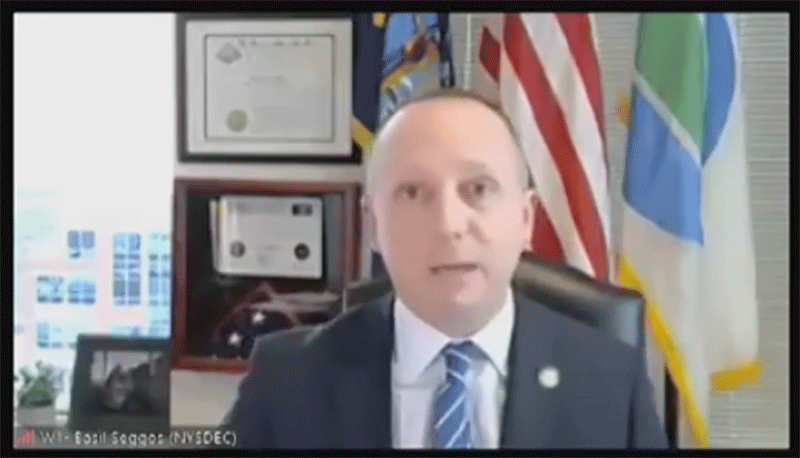
NYSDEC Commissioner of the Department of Environmental Conservation testifies remotely via Zoom at the January 27, 2021 joint NYS Assembly-Senate Environmental Conservation Budget Hearing.
Invasive Species Account: We support the spending in this account, but add that we need to prioritize education and interdiction programs. At this point, eradication grants help to try and control invasive species, but they do not eradicate. An equally important investment is in educational and intervention programs aimed at stopping the spread of invasive species. We urge the Legislature the reduce the size of the Eradication Grants Line and to create a fund of equal size for Education and Prevention programs designed to protect uninfested areas of the state and to educate the public about how to prevent the spread of invasive species. This would dovetail with efforts to strengthen the state’s “Invasive Species Transport Law.”
New EPF Account for Research: It’s easier for academics and non-profits in New York to secure grants to do work in South America than it is to undertake studies in New York. The EPF needs a new category for research that focuses on the natural resources and the relationship between people and the environment in New York. This fund would need to create some form of review and administration function within the Department of Environmental Conservation and other agencies with Legislative review and approval. Environmental research should be funded at $5 million annually in the EPF. Good science makes good policy. New York State should invest in environmental research across the state to identify critical problems and to help fund solutions.
Municipal Parks Account: We support the funding for Paul Smith’s College and SUNY ESF for $180,000 and $120,000 respectively for the Visitor Interpretive Centers in Paul Smith’s and Newcomb. Long-term these accounts should be boosted to $250,000 for each facility, which provide excellent ecological interpretation, recreation, and education to the public.
Environmental Justice: We support this account. We support the ANCA Adirondack Diversity Initiative funding of $250,000.
Support Resurrection of the Restore Mother Nature Bond Act
The Governor proposes a new $3 billion bond act for a broad range of environmental projects. The environmental community has advocated for a new bond act for a number of years and legislative leaders have also proposed environmental bond acts. However, the devil is in the details, and allocations in specific categories will be of significant importance. While we are supportive of this Bond Act, we urge the Legislature to detail the types of eligible projects that will best meet the environmental challenges in the years ahead. The Bond Act should also be expanded to $5 billion.
The Clean Water Fund
Protect the Adirondacks supports the Clean Water Fund. New York still faces an immense backlog of needed upgrades and expansions to public drinking water and sewer systems in the tens of billions. Throughout Upstate New York the water in lakes and rivers underwrites the local economy through tourism and high land values. Clean water also underwrites the quality of life.
The Department of Environmental Conservation
State Should Increase Forest Ranger Staffing: Protect the Adirondacks believes it is essential to increase the number of Forest Rangers and other personnel, such as assistant Rangers and backcountry stewards, to respond to these pressures. Ranger staffing for the entire state is currently around 135 positions. This needs to be expanded to 175 with a special focus on the High Peaks in the Adirondacks.
The Forest Rangers have primary responsibility for DEC’s care, custody and control of five million acres of State-owned land and conservation easements across New York, the vast majority of which is in the Adirondack Park. Today the average Forest Ranger is responsible for patrolling 53,752 acres. In 1970, it was 28,516 acres. There has been a major increase in public use, and the number of search and rescue missions has increased twofold.
DEC Staffing: The Governor proposes to increase staffing for DEC by 7 FTE’s to help support the Climate Leadership and Community Protection Act. We urge that new positions be created to fully fund a High Peaks Trail Crew of 10 permanent seasonal positions to build a sustainable trail system and tackle the 100-year backlog of trail work in the High Peaks Wilderness Area. The DEC needs to make a greater investment in Trail Crews.
Olympic Regional Development Authority
The Olympic Regional Development Authority (ORDA) is proposed to receive $95 million to “modernize” and improve the facilities, particularly to support the 2023 World University Games. This brings the total ORDA support during the Andrew Cuomo years to over $500 million since 2011. This funding level shows the reliance of the Cuomo Administration and North Country legislators in the theory about how ORDA funding will trickle down to local communities. Protect the Adirondack supports ORDA’s management of public Alpine and Nordic ski areas but we do not believe that this is a wise or strategic long-term investment in the North Country by the State of New York. We believe that this level of funding should be used to boost existing and new small businesses in the Adirondack Park. We urge the Legislature to scrutinize ORDA funding over the last 10 years. There needs to be a legislative study about whether there are real economic benefits to the hundreds of millions of ORDA funding in the last three years.
Adirondack Park Agency (APA)
Once again, the Governor has chosen to freeze staffing levels at the APA. The APA FTE’s allocation has not changed in many years, despite the significant work required by the agency to administer the Adirondack Park Private Land Use and Development Plan, the Wild, Scenic and Recreational Rivers Act, and the Freshwater Wetlands Act; as well as collaborating with DEC and OPRHP to administer the State Land Master Plan, developing Unit Management Plans, working with local governments to develop and implement land use plans, and perhaps most importantly to ensure that the Agency’s decisions are fully implemented.
Empire State Development Corporation
Regional Economic Development Councils: The Governor continues to propose $150 million to “Further advance each region’s long-term economic development strategies.” Protect the Adirondacks has consistently called for detailed oversight of the projects that have funded under this program. We urge the Legislature to conduct oversight hearings into the projects and expenditures authorized under this program. We agree that state funding can provide real incentives for local governments that have lasting value as economic drivers, but in the North Country and Adirondacks these funds go overwhelmingly to culvert upgrades, salt sheds for municipalities, and clean water municipal infrastructure with a fraction going to actual job-creating businesses. Moreover, more than half the funding from Regional Economic Development Councils goes to tax credit programs and IDA incentives that are not utilized or applicable, in the Adirondacks.
Climate Leadership and Community Protection Act Oversight
Oversight of State Agencies Needed: It’s too bad that some of the smaller agencies do not come to testify at these hearings or submit testimony. We need oversight hearings about how state agencies in the Adirondack Park are complying, after two years, with the Climate Leadership and Community Protection Act (CLCPA). We see no evidence that the Adirondack Park Agency (APA) has a policy and includes climate change mitigation in its review of proposed development and major subdivisions. The Department of Environmental Conservation states in its management plans that climate change mitigation is not a factor in planning recreational management.
Protect the Adirondacks
Protect the Adirondacks is an IRS-approved non-profit organization dedicated to the preservation and stewardship of the 6-million-acre Adirondack Park. Our mission is to protect the Adirondack Park’s wild character for current and future generations. PROTECT pursues this mission through a combination of advocacy, grassroots organizing, independent public oversight, research, education, and legal action. Protect the Adirondacks was formed in 2009 as a result of a merger between two long-standing environmental conservation groups in the Park, The Resident’s Committee to Protect the Adirondacks and the Association for the Protection of the Adirondacks. Protect the Adirondacks is managed by a 22-member Board of Directors of Adirondack leaders in state agency management, environmental law, local government, Adirondack environmental and cultural history, and small business. Protect the Adirondacks maintains an office in a 100% energy efficient, solar- and wind-powered office in Johnsburg in the central Adirondacks.
On behalf of the Board of Directors of Protect the Adirondacks, please accept my gratitude for the opportunity to present our concerns about environmental spending in the 2021-2022 state budget.
Sincerely,
Peter Bauer,
Executive Director

